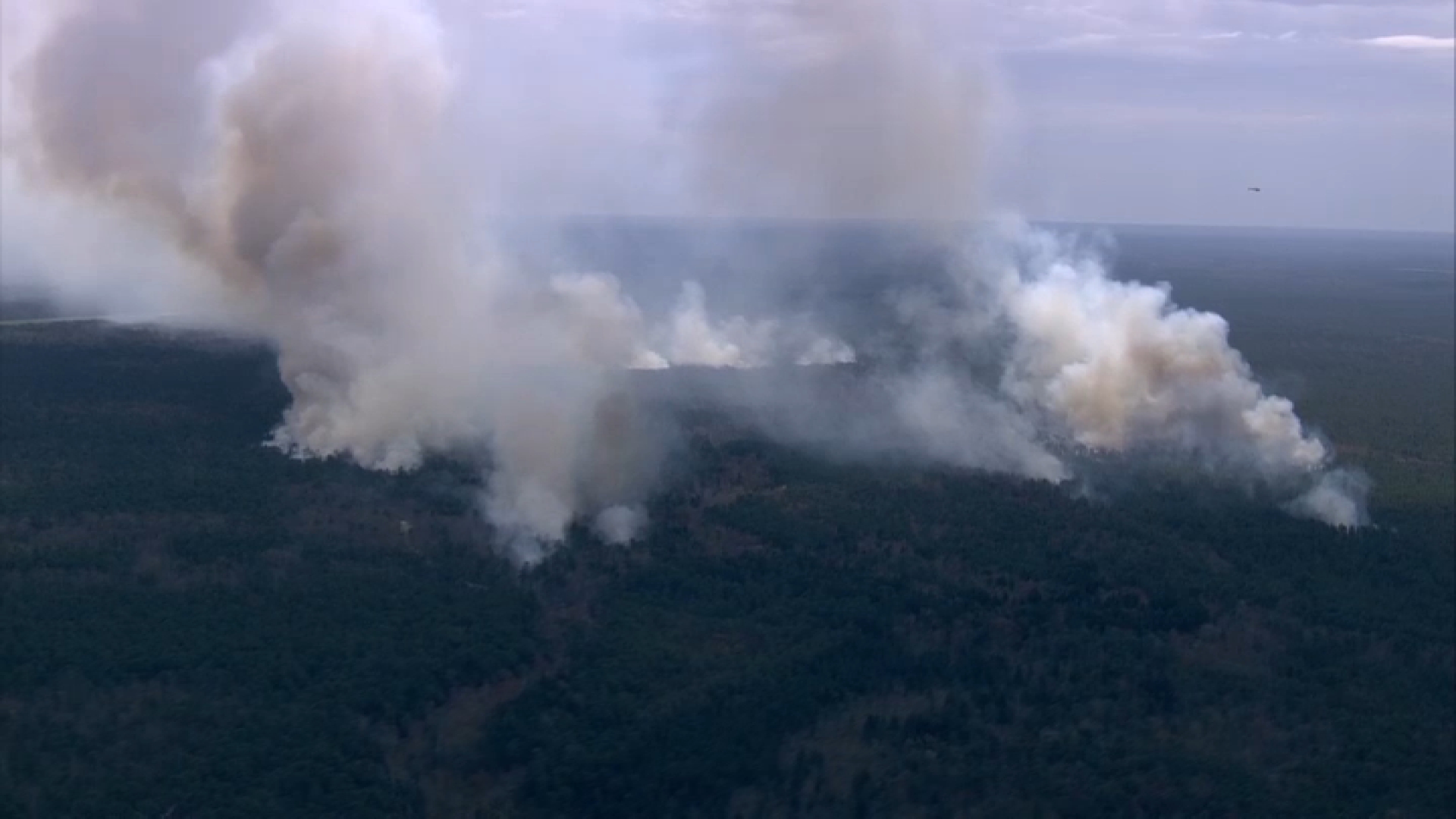The natural gas boom gripping parts of the U.S. has a nasty byproduct: wastewater so salty, and so polluted with metals like barium and strontium, most states require drillers to get rid of the stuff by injecting it down shafts thousands of feet deep.
Not in Pennsylvania, one of the states at the center of the gas rush.
There, the liquid that gushes from gas wells is only partially treated for substances that could be environmentally harmful, then dumped into rivers and streams from which communities get their drinking water.
In the two years since the frenzy of activity began in the vast underground rock formation known as the Marcellus Shale, Pennsylvania has been the only state allowing waterways to serve as the primary disposal place for the huge amounts of wastewater produced by a drilling technique called hydraulic fracturing, or fracking.
In 2009 and part of 2010, energy company Cabot Oil & Gas trucked more than 44,000 barrels of well wastewater to a treatment facility in Hatfield Township, a Philadelphia suburb. Those liquids were then discharged through the town sewage plant into the Neshaminy Creek, which winds through Bucks and Montgomery counties on its way to the Delaware River.
Regulators put a stop to the practice in June, but the more than 300,000 residents of the 17 municipalities that get water from the creek or use it for recreation were never informed that numerous public pronouncements that the watershed was free of gas waste had been wrong.
Local
Breaking news and the stories that matter to your neighborhood.
"This is an outrage,'' said Tracy Carluccio, deputy director of the Delaware Riverkeeper Network, an environmental group. "This is indicative of the lack of adequate oversight.''
State regulators, initially caught flat-footed, tightened the rules this year for any new water treatment plants, but allowed any existing operations to continue discharging water into rivers.
At least 3.6 million barrels of the waste were sent to treatment plants that empty into rivers during the 12 months ending June 30, according to state records. That is enough to cover a square mile with more than 8 1/2 inches of brine.
Researchers are still trying to figure out whether river discharges, at their current levels, are dangerous to humans or wildlife. Several studies are under way, some under the auspices of the Environmental Protection Agency.
State officials, energy companies and the operators of treatment plants insist that with the right safeguards in place, the practice poses little or no risk to the environment or to the hundreds of thousands of people, especially in western Pennsylvania, who rely on those rivers for drinking water.
But an Associated Press review found that Pennsylvania's efforts to minimize, control and track wastewater discharges have sometimes failed.
For example:
- Of the roughly 6 million barrels of well liquids produced in a 12-month period examined by The AP, the state couldn't account for the disposal method for 1.28 million barrels, about a fifth of the total, due to a weakness in its reporting system and incomplete filings by some energy companies.
- Some public water utilities that sit downstream from big gas wastewater treatment plants have struggled to stay under the federal maximum for contaminants known as trihalomethanes, which can cause cancer if swallowed over a long period.
- Regulations that should have kept drilling wastewater out of the important Delaware River Basin, the water supply for 15 million people in four states, were circumvented for many months
Industry representatives insist that the wastewater from fracking has not caused serious harm anywhere in Pennsylvania, in part because it is safely diluted in the state's big rivers. But most of the largest drillers say they are taking action and abolishing river discharges anyway.
Cabot, which produced nearly 370,000 barrels of waste in the period examined by The AP, said that since the spring it has been reusing 100 percent of its well water in new drilling operations, rather than trucking it to treatment plants for disposal.
"Cabot wants to ensure that everything we are doing is environmentally sound,'' said company spokesman George Stark. "It makes environmental sense and economic sense to do it.''
All 10 of the biggest drillers in the state say they have either eliminated river discharges in the past few months, or reduced them to a small fraction of what they were a year ago. Together, those companies accounted for 80 percent of the wastewater produced in the state.
The biggest driller, Atlas Resources, which produced nearly 2.3 million barrels of wastewater in the review period, said it is now recycling all water produced by its wells in their first 30 days of operation, when the flowback is heaviest. The rest is still sent to treatment plants, but ``our ultimate goal is to have zero surface discharge of any of the water,'' said spokesman Jeff Kupfer.
A number of gas drillers have also begun recycling wastewater in other parts of the country to cut down on the costs of disposal and of obtaining the fluids needed for new fracturing jobs.
Still, with dozens more energy companies at work in the state's surging gas industry, more than 2,400 wells drilled and work starting on 5,400 more, operators of the largest of the state's 16 most commonly used treatment plants say they haven't lost much business. Records verifying company claims of a major dropoff in river disposal will not be available until midwinter.
University of Pittsburgh scientist Conrad Volz, who has been studying the environmental effect of the wastewater discharges, said he had student researchers in the field this fall documenting a steady flow of brine-filled tankers arriving at plants on the Monongahela River south of Pittsburgh, and on the Blacklick Creek, 17 miles northwest of Johnstown.
"We've been taking pictures of the trucks,'' he said. "We know it's still happening.''
Researchers are still trying to figure out, he said, whether the wastewater discharges, at their current levels, could cause serious environmental harm.
The municipal authority that provides drinking water to BeaverFalls, 27 miles northwest of Pittsburgh, began flunking tests for trihalomethanes regularly last year, around the time that a facility 18 miles upstream, Advanced Waste Services, became Pennsylvania's dominant gas wastewater treatment plant.
Trihalomethanes aren't found in drilling wastewater, but there can be a link. The waste stream often contains bromide, a salt, which reacts with the chlorine disinfectants used by drinking water systems to kill microbes. That interaction creates trihalomethanes.
The EPA says people who drink water with elevated levels of trihalomethanes for many years have an increased risk of getting cancer and could also develop liver, kidney or central nervous system problems.
Gas drilling waste isn't the only substance that can cause elevated trihalomethane levels. Pennsylvania's multitude of acid-leaching, abandoned coal mines and other industrial sources are also a major factor in the high salt levels that lead to the problem.
Beaver Falls plant manager Jim Riggio said he doesn't know what is causing the problem, but a chemical analysis raised the possibility that it might be linked to the hundreds of thousands of barrels of partially treated gas well brine that now flow past his intakes every year.
"It all goes back to frack water,'' he said.
Hydraulic fracturing and horizontal drilling techniques allow more methane than ever before to be unlocked from ancient shale sea beds buried deep underground.
Fracturing involves injection of millions of gallons of water mixed with chemicals and sand deep into the rock, shattering the shale and releasing the gas trapped inside. When the gas comes to
the surface, some of the water comes back, too, along with underground brine that exists naturally.
It can be several times saltier than sea water and tainted with fracking chemicals, some of which can be carcinogenic if swallowed at high enough levels over time.
The water is also often laden with barium, which is found in underground ore deposits and also used by drillers as a bit lubricant. It can cause high blood pressure if someone ingests enough of it over a long period of time.
Particles in the water are also often tainted with radium, a naturally occurring radioactive substance, and strontium, a mineral abundant in rocks, earth, coal and oil.
The amount of produced water varies from well to well, but in Pennsylvania it has been running at around 1 to 2 gallons for every 10 gallons injected into the ground.
In some parts of the state, there have also been fights over whether the drilling process itself has the potential to contaminate nearby drinking water wells.
Cabot agreed in December to pay $4.1 million to 19 homeowners in Dimock, Pa., whose private wells, Pennsylvania authorities said, were contaminated by methane gas migrating underground from a drilling site. Cabot denies responsibility for the pollution.
As for the unauthorized discharges into Neshaminy Creek, Cabot spokesman Stark said the company was aware that its waste shouldn't have been going to facilities in the Delaware Basin. He said he wasn't sure, however, whether Cabot knew where the firm it had hired to treat the waste, PSC Environmental Services, was discharging the fluids.
Regulators did not impose any fines after Cabot and the two treatment plants halted the discharges.
Clifford David, president of the Heritage Conservancy, a nature and land preservation group in Bucks County, said he was wasn't aware that gas drilling wastes had been discharged in the creek.
He said he doesn't believe any wastewater discharges should be allowed without a thorough treatment that removes all contaminants that could degrade a waterway.
"It seems to me that we have the technology and the capacity to take that water and clean it to a level where it's a higher water quality than what's in the river to begin with,'' he said.
"We have been able to do it carefully. We have been able to do it safely,'' said Al Lander, President of Tunnelton Liquids, one of the state's busiest treatment plants. The facility, near Saltsburg,
east of Pittsburgh, treats both drilling water and acid draining out of an abandoned mine.
"In some respects, it's better than what's already in the river,'' he said of the water his plant discharges into the Conemaugh. "What we are putting into the river now is far cleaner, and far more eco-friendly than what was running in naturally from acid mine drainage.''
The EPA requires all polluters to get a permit before they can discharge wastewater into rivers and streams. In theory, the permits limit how dirty the effluent can be when it is discharged into a river and ensure that the water quality doesn't degrade.
But Pennsylvania, which administers the EPA permit program within its borders, initially lacked a clear regulatory scheme to deal with the big increases in volume created by the gas boom and wasn't initially aware that some facilities had begun handling the waste.
Since then, the state has enacted tougher water quality standards. The new rules, adopted last summer, allow existing treatment plants to continue operating with few changes, but will require new facilities to meet strict targets for dissolved solids and chlorides
Essentially, the water they discharge must be no saltier than tap water.
The Delaware River Basin Commission, which regulates water use in a 13,539-square-mile area that supplies drinking water to New York City, Philadelphia and many other cities in towns in New Jersey, New York, Pennsylvania and Delaware, has put a moratorium on new Marcellus Shale drilling projects because of environmental concerns.
But in early December, it proposed regulations that would lift the ban and allow drilling to finally ramp up in eastern Pennsylvania, as it has in other parts of the state, though under close oversight.
Among other things, the rules would require drillers to submit a plan detailing how they intend to dispose of wastewater and require them to perform a "treatability study'' confirming that any discharges won't cause a water body to fall below EPA water quality standards.



